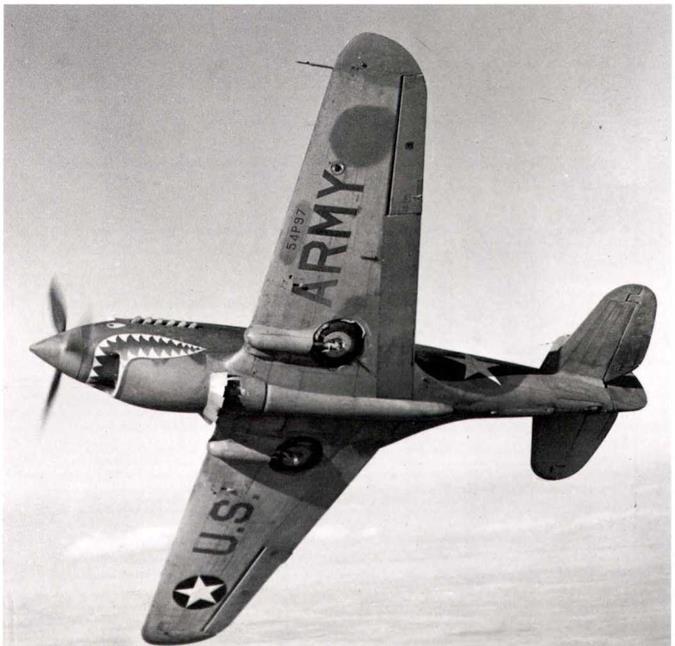1942 The First Full Year of Combat

The beginning of 1942 was not much better for the USAAF as the Japanese pushed deeper into the Philippines, most of the US aircraft being destroyed on the ground or overwhelmed in the air. The islands were finally overrun in May, but a short while before, Gen. Doolittle led sixteen B-25 medium bombers on a daring raid on Japan, made from the deck of the US Navy carrier Hornet. This was a real morale booster at a time when it was badly needed. The battle of the Coral Sea in May, followed by that of Midway in June, marked the turning point of the war in the Pacific, and finally allowed the new Eighth Air Force to be sent to England to commence operations against Germany.
On the eastern front the Russians had launched their first major winter counter-attack at the beginning of 1942 against the German Army around Moscow, causing its first major retreat of the war.
Later in the year, in North Africa, British Gen. Montgomery’s victory at El Alamein, Libya, in October started the final Axis retreat across North Africa and paved the way for the Allied operation “Torch”, under Gen. Eisenhower, the invasion of Northwest Africa on November 8, 1942.
At the end of 1942, the German Army got mired down in Stalingrad, paving the way for more Russian winter offensives.
The USAAF emphasis on production and training began to show results and by June, its strength had more than tripled to a total of more than 21,00(1 aircraft, including more than 12,000 trainers. More than 140 aircraft were lost in combat over Europe and North Africa, while nearly three times as many, 341, were lost in the war against Japan.
During 1942, the results of combat experience resulted in the following major changes in the marking and camouflaging of USAAF aircraft:
Anti-submarine white camouflage evolved.
Blue haze paint tested for use on F-4 reconnaissance aircraft. “U. S.ARMY” underwing markings deleted from combat aircraft, May.
Red center removed from cocarde, rudder stripes deleted from combat aircraft. May.
Medium Green patches added to wing and tail surfaces of combat aircraft, July.
Camouflage colors standardized for all USA produced Allied aircraft, July.
Red center dot removed from cocarde and rudder stripes deleted from all aircraft, July.
Blue and yellow finish for primary and basic trainers deleted, September.
Yellow outer ring added to fuselage cocarde in Europe and North Africa, September.
“U. S.ARMY” underwing markings deleted from all aircraft, October.
|
Spec. No. |
Jan. Feb. |
Mar. Apr. |
May June |
Jul. Aug. |
Sep. Oct. |
Nov. Dec. |
|
T. O. 07-1-1 Markings, Insignia, & Camouflage |
New Issue | |
A В | | |
||||
|
Bulletin 41 Colors for Camouflage Finishes |
1 | |
A | |
||||
|
Bulletin 48 Colors for Temporary Camouflage Finishes |
Issued May. 1 |
|||||
|
A-N Porcelain Color Plates |
||||||
|
Spec. 3-1 Color Card |
||||||
|
24102 National Insignia |
3 | |
4 | |
L | |
|||
|
24105 Markings for Airplanes |
f |
|||||
|
24113 Color for Army Air Corps Airplanes |
6 | |
|||||
|
24114 Camouflage Finishes for Aircraft |
A | |
|||||
US Army Air Forces specifications in use, revised, or issued, by date and version,
during 1942. The letters indicate a letter revision of a spec., such as T. O. 07-1-1 A. The numbers indicate an amendment to an earlier version of a spec., such as Amendment No. 6 to Spec. 24114.
|
|
Curtiss P-40-CU used as a training aircraft by the 54PG, at Hamilton Field, California, in early 1942. It is interesting to note that the cocarde underthe left wing and the old designator markings have been painted out, though very thinly, and that the neutral gray paint sweeps up to the horizontal stabilizer, identifying this as one of the original camouflaged P-40s. (USAF)
* * *
AAF Eastern Theater Of Operations orders camouflage paint to be applied immediately on all aircraft, January 1,1942.
Gen. Krogstad, commander of the First Air Force, requested that the First Bomber Command, Langley Field, VA„ take immediate action to have the prescribed camouflage applied to all of its aircraft immediately. This memo went to the 34th Bomb Gp, Westover Field, MA, the 43rd Bomb Gp, Bangor, ME, the 13th Reconn. Sq, Bangor, ME, and the 2nd Bomb Gp, Langley Field, VA.











